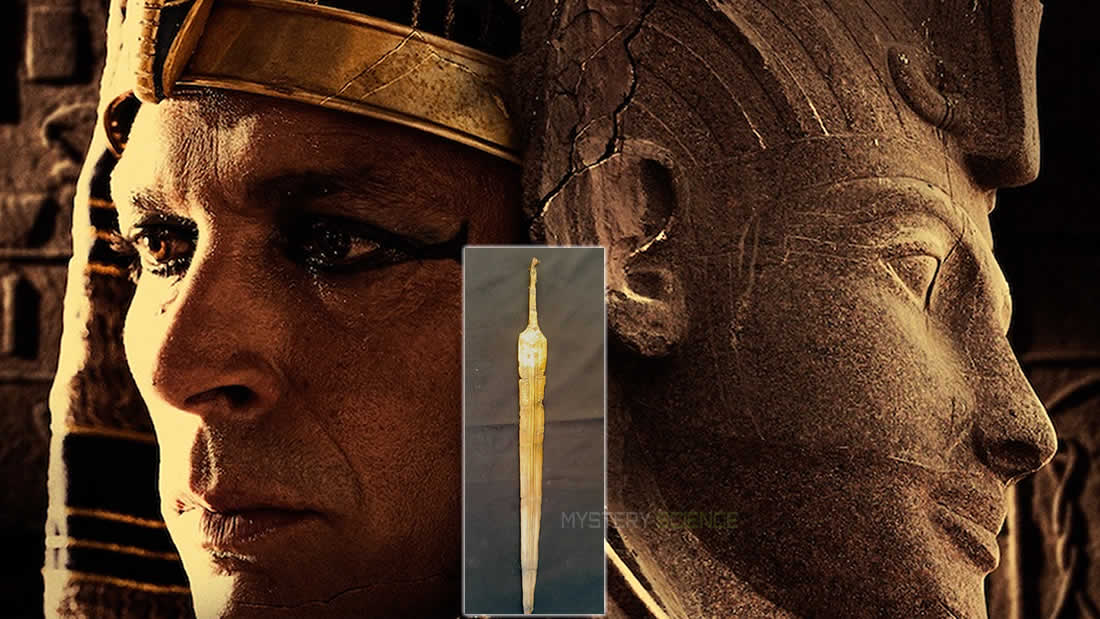Egyptian archaeologists have discovered an ancient sword belonging to the army of Ramses II, the pharaoh mentioned in the Book of Exodus.
Thanks to a press releaseThe Egyptian Ministry of Tourism and Antiquities reported the discovery, which was made during excavations at Housh Eïssaa town in the governorate of Beheira.
The discovery took place at the site called Tell Al-Abqainarchaeologists found there “a series of adobe architectural units, including military barracks for soldiers and warehouses for weapons, food, and supplies from the New Kingdom era.”
Important military defense site
For him Dr Mohamed Ismail KhaledSecretary General of the Supreme Council of Antiquities, this place was an ancient fort historically important to Egypt and served as a key outpost.
The fort consisted of warehouses to store weapons and food, as well as barracks to house soldiers at a strategic point in the northwest of the country, about 90 kilometers (56 miles) south of Alexandria, according to a press release published by the ministry. Defense Tourism and Egyptian Antiquities.
He protected the Egyptian borders from several Libyan tribes attacking Egypt, at a time when the ancient empire was at the height of its power and when “People of the Sea”groups of violent sailors who have carried out attacks throughout the eastern Mediterranean and whose exact identity and origin remain a mystery.
 The fortress was built to protect Egypt’s northwest border.
The fortress was built to protect Egypt’s northwest border.
Bronze sword with the symbol of Pharaoh Ramses
One of the most important discoveries was a bronze sword bearing the cartouche, or hieroglyphic symbol, of Ramesses. A photograph of the sword shows that the artifact has deteriorated over time, but still retains the symbol of the Egyptian ruler.
 The bronze sword contains a hieroglyphic inscription of Ramesses II. Credit: Egyptian Ministry of Tourism and Antiquities.
The bronze sword contains a hieroglyphic inscription of Ramesses II. Credit: Egyptian Ministry of Tourism and Antiquities.
“The fact that an object has the cartouches of Ramesses II on it suggests to me that it belonged to someone of relatively high status,” Elizabeth Frood, an Egyptologist at the University of Oxford, told the Washington Post. “Being able to display such an object, even though it was presumably in a sheath, was a marker of status and prestige.”
Likewise, a wide variety of relics have been found, from weapons and tools to hygiene items and jewelry that belonged to soldiers, revealing details of their daily lives.
“These [hallazgos] They include weapons used in combat, hunting tools, personal adornments and hygiene items, such as ivory kohl applicators, carnelian and earthenware beads, scarabs and protective amulets,” they said. added Egyptian officials.
Since the time of Moses
According to biblical accounts, Moses led the enslaved Israelites out of Egypt and into the wilderness of Paran. Although the Bible does not mention the name of the pharaoh who interacted with Moses in the Old Testament Book of Exodusmost scholars believe the text refers to Ramesses.

The reign of Ramses II was the second longest in ancient Egypt – from 1279 to 1213 BC – and marked the final peak of Egyptian military power.
A publication of Mysterious science. All rights reserved. – Redistribution and redistribution of this content without prior consent is expressly prohibited. Website protected by Safe Creative.
Thank you for reading us. We invite you to follow us on our Facebookto be up to date with all the news we publish daily. You can also join our community on Telegram. We are waiting for you!
